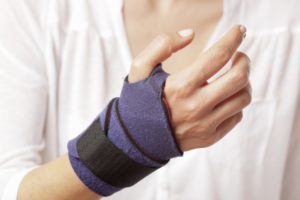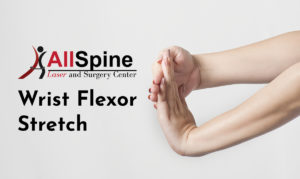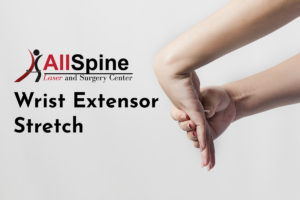Carpal Tunnel, Cubital Tunnel Syndrome & More

What is Carpal Tunnel Syndrome?
Carpal tunnel syndrome is a condition that causes numbness, tingling and other symptoms in the hand and arm. Carpal tunnel syndrome is caused by a compressed nerve in the carpal tunnel, a narrow passageway on the palm side of your wrist.
The anatomy of your wrist, health problems and possibly repetitive hand motions can contribute to carpal tunnel syndrome.
Proper treatment usually relieves the tingling and numbness and restores wrist and hand function.
Common Carpal Tunnel Syndrome Symptoms
Tingling or numbness. You may experience tingling and numbness in your fingers or hand. Usually the thumb and index, middle or ring fingers are affected, but not your little finger. Sometimes there is a sensation like an electric shock in these fingers.
 The sensation may travel from your wrist up your arm. These symptoms often occur while holding a steering wheel, phone or newspaper. The sensation may wake you from sleep.
The sensation may travel from your wrist up your arm. These symptoms often occur while holding a steering wheel, phone or newspaper. The sensation may wake you from sleep.
Many people “shake out” their hands to try to relieve their symptoms. The numb feeling may become constant over time.
Weakness is another symptom of carpal tunnel syndrome. You may experience weakness in your hand and a tendency to drop objects. This may be due to the numbness in your hand or weakness of the thumb’s pinching muscles, which are also controlled by the median nerve.
 Carpal Tunnel Syndrome Treatments
Carpal Tunnel Syndrome Treatments
Since carpal tunnel can progress, if caught early on you can do a few things to decompress your nerve. Physical things you can do are to take breaks to rest your hands if working in an environment that requires frequent use of your hands in a compressed position such as an office. You should also avoid any activity that makes your symptoms worse, and apply cold packs to reduce swelling. Wrist splinting can be effective if you have mild to moderate symptoms, but if you have numbness it’s best to consult a medical professional.
Carpal Tunnel Syndrome Exercises and Stretches

There are a few stretches of the wrist which can help prevent carpal tunnel from progressing, rehabilitation, and preventing carpal tunnel from coming back. You should avoid stretches that are painful or uncomfortable. The first kind of stretch is the wrist flexor stretch, which involves extending your arm in front of you with the palm facing upwards, then bending your wrist down so your fingers are pointing to the floor. Use your other hand to bend the wrist farther until you feel a mild stretch in your forearm for 15 to 30 seconds, repeated 2-4 times. The wrist extensor stretch is similar to the wrist flexor stretch, just in reverse with your palm pointing downward rather than upward.
Carpal Tunnel Surgery
Endoscopic surgery for carpal tunnel is a minimally invasive surgery using a thin tunnel-like device with a very small camera to help your surgeon accurately perform carpal tunnel surgery. The aim is to cut the ligament pressing on the median nerve and relieve the pressure causing you pain and/or numbness. The use of an endoscope helps the healing process afterwards and you may have less pain in the recovery process. The alternative to this is open surgery, which is more invasive since more of an incision must be made.
Ulnar Neuropathy or Cubital Tunnel Syndrome

Ulnar nerve entrapment occurs when the ulnar nerve in the arm becomes compressed or irritated. The ulnar nerve is one of the three main nerves in your arm. It travels from your neck down into your hand, and can be constricted in several places along the way, such as beneath the collarbone or at the wrist. The most common place for compression of the nerve is behind the inside part of the elbow. Ulnar nerve compression at the elbow is called “cubital tunnel syndrome.” Numbness and tingling in the hand and fingers are common symptoms of cubital tunnel syndrome. In most cases, symptoms can be managed with conservative treatments like changes in activities and bracing. If conservative methods do not improve your symptoms, or if the nerve compression is causing muscle weakness or damage in your hand, your doctor may recommend surgery.
Ulnar Neuropathy Treatments and Surgery
There are both non-surgical treatments for ulnar nerve entrapment and surgical treatments for ulnar neuropathy. Typically your doctor will recommend non-surgical treatment such as physical therapy to strengthen ligaments and tendons in the hands and elbows, stretching, and pain management medication such as aspirin or ibuprofen to control inflammation. Splints are also a useful tool for immobilizing the elbow to prevent further progression of the neuropathy.
If non-surgical treatments don’t work the next step is considering a procedure to help resolve symptoms. There are two locations in which a surgeon can make an incision to decompress the ulnar nerve, the elbow and the wrist. The ulnar nerve can be accessed at both locations, and it depends on the condition of the patient as to which procedure may be performed. After surgery return to normal activities can happen in 4 to 6 weeks.
 Lateral Epicondylitis aka Tennis Elbow
Lateral Epicondylitis aka Tennis Elbow
This condition is inflammation of the tendon that connects the muscles of the forearm to the elbow. It is caused by specific repetitive motions of the wrist and arm, like playing tennis or even repetitive computer mouse use. The inflammation causes pain, and can happen in anyone who has repetitive motions of the arm including plumbers, painters, and butchers. The pain can be felt outside of the elbow towards the forearm, and can spread to the forearm and wrist. The pain may make it difficult to shake hands, turn a door knob, or hold a coffee cup. Usually rest and over the counter medication are recommended to see if the condition will alleviate over time.
Medial Epicondylitis aka Golfer’s Elbow
Golfer’s elbow is similar to tennis elbow in that it is also inflammation of the tendons that connect the muscles from the forearm to the elbow, but on the inside bend rather than the outside. It is caused by specific repetitive motions by the arm and wrist and placing stress on the forearm, like golfing, tennis players or other activities where repetitive gripping motion is required. Symptoms include pain and tenderness, stiffness, weakness, and numbness or tingling.
Peripheral Neuropathy Symptoms
Peripheral neuropathy is a painful condition caused by the damage to the peripheral nervous system, which are the nerves outside of your brain and spinal cord. Nerve damage can be caused by disease, traumatic injury, and surgery. Though one of the most common causes is diabetes. When damage is caused to the peripheral nervous system this can cause weakness and numbness and pain usually in the hands or feet, but can also have an effect on other parts of the body.
Inflammation of the Biceps Tendon at the Elbow
Inflammation of a part of the tendon that connects the bicep muscle to the radius bone at the elbow. The tendon can become inflamed during certain physical activities, such as rowing and weightlifting. In some cases, the distal tendon may be ruptured.


